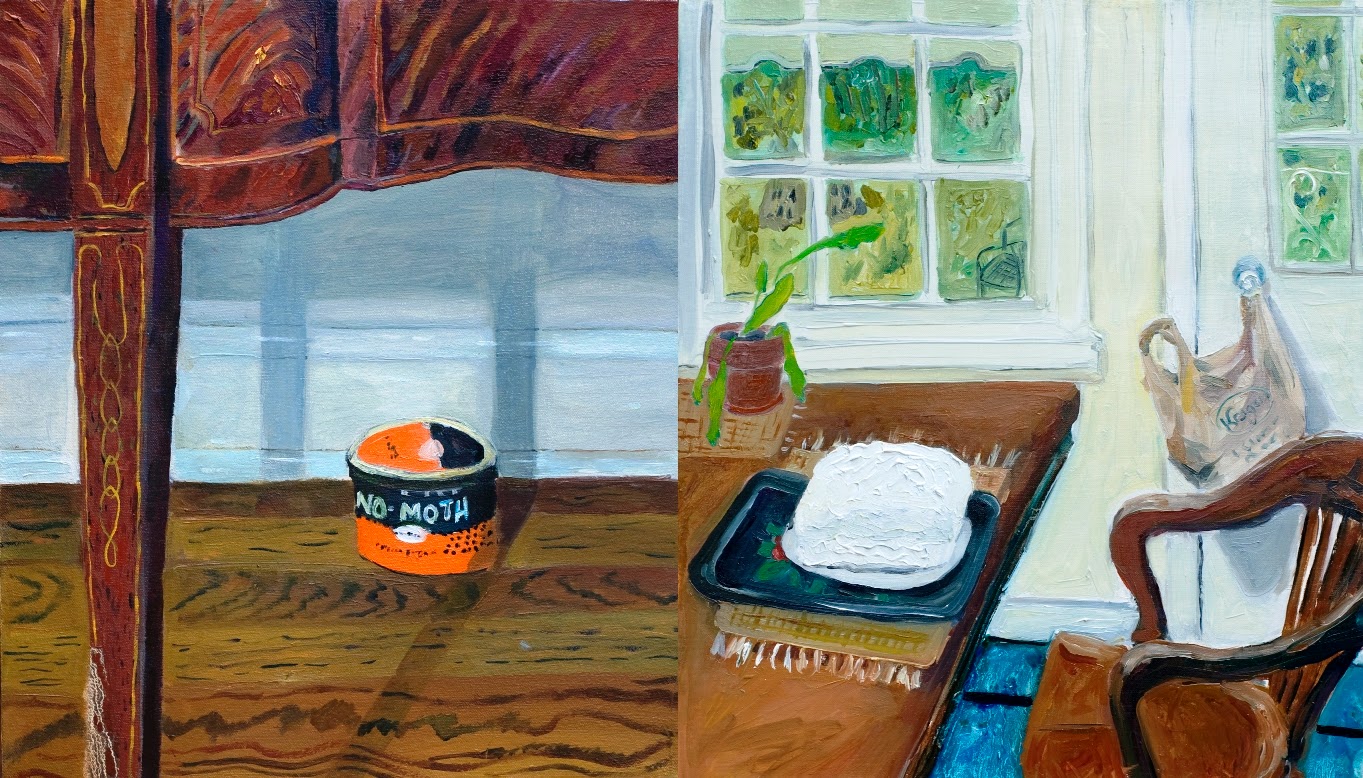 |
|
1968. It Was a Beautiful Cake. No Moths, 2014,
Two panels, oil on linen/oil on canvas, 16 x 14 inches each |
“Thus the hankering for houses is often a desire for a life, and the
fervency with which we pursue them is the hope that everything will be alright,
that we will be loved, that we will not be alone, that we will stop quarreling
or needing to run away, that our lives will be measured, gracious, ordered,
coherent, safe.” ~Rebecca Solnit, “Inside Out”
I’ve spent
every decade of my life as an artist in a different region: Southeast, Midwest,
West Coast. I’ve lost track of how many houses and studios. I held yard sales
with every move, anticipating a lighter footprint along the way. I am in the
South again. I wasn’t sure I’d stay. Even now as I write this and Google
“storage units,” I wonder whether I am nomadic by nature or if I take secret
pleasure in being bound by the objects I currently tend to from eras past.
The recent
paintings are the result of field work and intense observation. Each canvas becomes
a surrogate for objects, memories or situations up for parole. The finished
painting becomes another object, but with repetition comes detachment. For Anywhere
But Here, I baked a cake from a family recipe, and polished a sideboard—
two seemingly incongruent activities that resulted in the diptych, 1968. It Was a Beautiful Cake. No Moths. During the actual process of painting, there
is no narrative and no objective other than to document the scene in front of
me. Shadows shift, the light changes, I move to the left or the right.
Everything is in flux. Within these small acts of negotiation, time falls away
and I feel most at home. ~Mary Addison
Hackett
We came across Mary Addison Hackett's work at a big, hodgepodge group show in Los Angeles a couple years back; a show were everyone tries to overshadow the next artist. On our way out, we spotted a little corner area we neglected to visit. Hiding out here were a cluster of quiet yet sneakily persuasive paintings by Mary Addison. The wall flowers of the show. We were hooked!
We came across Mary Addison Hackett's work at a big, hodgepodge group show in Los Angeles a couple years back; a show were everyone tries to overshadow the next artist. On our way out, we spotted a little corner area we neglected to visit. Hiding out here were a cluster of quiet yet sneakily persuasive paintings by Mary Addison. The wall flowers of the show. We were hooked!
Mary Addison Hackett is a Nashville-based painter who has recently returned to the South after an extended leave of absence.



